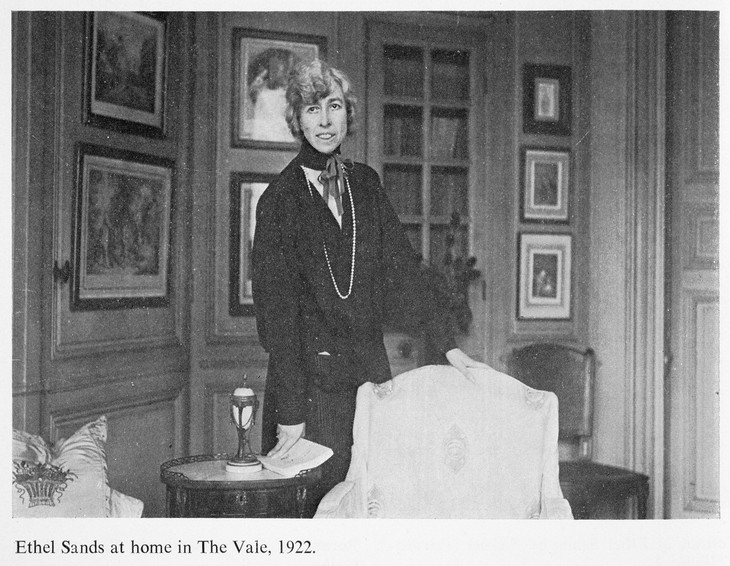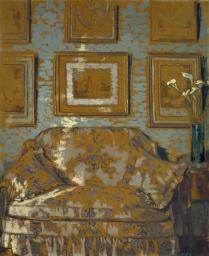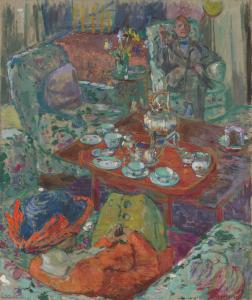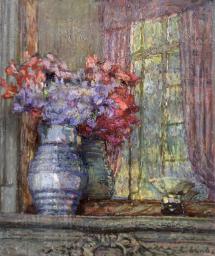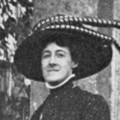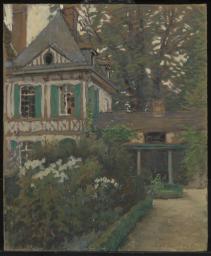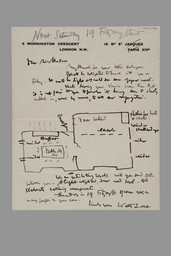Ethel Sands 1873–1962
Ethel Sands (fig.1) was best known in her own lifetime as one of the most important hostesses in cultured English society in the early twentieth century. Along with such figures as Lady Ottoline Morrell and Lady Sibyl Colefax, she provided a venue and congenial atmosphere for artists, writers and other members of England’s cultural elite to meet, converse and exchange ideas. Frequent visitors to her Oxford house in Newington and London residences in Lowndes Street and later the Vale, Chelsea, included such notable names as Walter Sickert (fig.2), Augustus John, the writers Henry James and Arnold Bennett, and members of the Bloomsbury Group such as Virginia Woolf and Roger Fry.
Sands inherited a taste for socialising from her American parents, her father Mahlon Sands and her mother Mary Morton Hartpence, who had been a famous society beauty of her day, painted by John Singer Sargent in 1893–4.1 Their daughter and eldest child Ethel was born in Newport, Rhode Island, on 6 July 1873, but the following year the family moved to England where they settled permanently, returning to America for only two years when Ethel Sands was four. In London, the Sands enjoyed an extremely full social life, moving within fashionable and important circles that included the Marlborough House set, centred on the Prince of Wales, the future Edward VII. In 1888 her father was killed in a riding accident, and her mother continued to bring her children up alone. Aged twenty-one, in 1894 Sands chose to go to Paris to study painting and it was here she met her lifelong partner Anna (Nan) Hope Hudson. In 1896 her mother also died prematurely, leaving Sands with the responsibility of caring for two younger brothers as well as a considerable fortune. The conferral of independent means enabled Sands to pursue painting without the necessity of supporting herself through the sale of works.
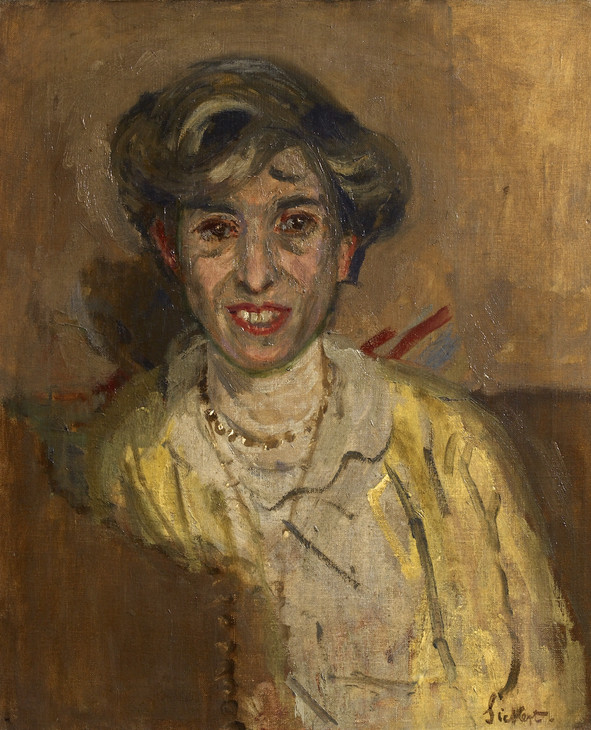
Walter Richard Sickert 1860–1942
Portrait of Ethel Sands 1913–14
Oil paint on canvas
540 x 451 mm
Ashmolean Museum, Oxford. On loan from the Christopher Sands Trust. LI054.14
© Estate of Walter R. Sickert / DACS
Photo © Ashmolean Museum, Oxford
Fig.2
Walter Richard Sickert
Portrait of Ethel Sands 1913–14
Ashmolean Museum, Oxford. On loan from the Christopher Sands Trust. LI054.14
© Estate of Walter R. Sickert / DACS
Photo © Ashmolean Museum, Oxford
Although never a key figure in the development of contemporary art in London, Sands was a regular exhibitor alongside some of the most important British artists of the time. In 1907 she was asked by Sickert to join the Fitzroy Street Group, where she exhibited her own paintings and purchased the work of others. Although as a woman she was excluded from the Camden Town Group, she later became a founder-member of the London Group and exhibited at the Brighton show English Post-Impressionists, Cubists and Others in 1913. Throughout her lifetime she regularly exhibited works at the New English Art Club, the Women’s International Art Club and the Goupil Gallery Winter Salons. She held her first solo exhibition in Paris in 1911, a joint show with Nan Hudson at the Carfax Gallery in 1912 and another solo exhibition at Goupil in 1922. In addition, she played an active role in patronising modern artists and acquiring their work. Her house in the Vale, Chelsea, was decorated with murals and mosaics by the Russian émigré Boris Anrep (1883–1969), who also completed mosaic floors for the Tate Gallery (1923) and the National Gallery (1927 and 1952). Sands also commissioned some wall panels of the New Bedford theatre from Sickert, although these were never completed.
Painting always took place in her life alongside a host of other interests and commitments. During the First World War she undertook extraordinary work nursing wounded soldiers in France and later became forewoman of an overall factory in Britain. She became a British citizen in 1916. After the war she shared Hudson’s enthusiasm in renovating and decorating the Château d’Auppegard in Dieppe and during the later years of her life she divided her time between France and London, maintaining her enthusiasm for socialising into old age. The Second World War forced her to move home several times and saw the destruction of her London house during the Blitz. She cared for Hudson until her friend’s death in 1957, and she herself died on 19 March 1962, aged eighty-eight. She left a wealth of correspondence now kept in the Tate Archive, containing letters from many important figures of the day, as well as her private correspondence with Hudson. This material was first studied and arranged by the art historian Wendy Baron who, in 1977, published a biography of the artist.
Notes
Catalogue entries
How to cite
Nicola Moorby, ‘Ethel Sands 1873–1962’, artist biography, March 2003, in Helena Bonett, Ysanne Holt, Jennifer Mundy (eds.), The Camden Town Group in Context, Tate Research Publication, May 2012, https://www

